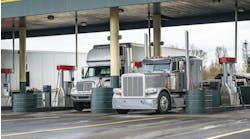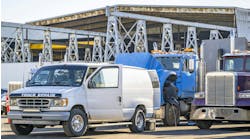History has a way of repeating itself in one shape or form and that is why historical data about your assets is valuable, even as new technologies are introduced.
Fleets typically are capturing financial and operational data in a variety of disparate data warehouses, managed by many different departments. These data sources include accounting ERP systems, driver performance data from onboard computers, fuel data, and maintenance and repair data. Each part of the organization will use its data set to make tactical and even strategic decisions as it relates to their specific area of the business.
The problem is that if a department only looks at its own data, it does not get the full picture of the impact of a decision on the entire organization. Data-driven organizations are those that have realized the value of data consolidation. Business Intelligence (BI) tools allow organizations to quickly view all aspects of the revenue and expense associated with their fleet assets.
Looking at historical data is an important part of having a complete picture of your operation and how it has performed. Using the historical trends, business owners can then project out what their future revenues and expenses should be based on a static set of outside market variables. When looking at historical trends I suggest using 10 years of data for your analysis.
By using an extended view, the data will capture onetime events and factor them into your future projections. You can count on there being onetime events in the future as well. To demonstrate the effect of a onetime event let’s look at the price of a new tractor. The 10-year average cost increase of a Class 8 tractor typically is 2-3%. However, in some years that percentage was much higher, particularly in years like 2007 when emissions-related regulations went into effect. If you only look at a short period of time, your analysis will be skewed.
Bringing all the data together over a longer period of time allows you to see trends. The averaging is important because while you might have a big price increase from emissions related changes — or from some other new technology like electric trucks — you are not going to have those price increases every year.
COVID-19 is hopefully a onetime event and has made the 2020 transportation environment much different than previous years. To base forecasts off of 2020 performance would be flawed, as would basing forecasts off of 2019.
However, what happened this year can’t be totally ignored because it is going to have long lasting effects well into the future.
To have the best data for decision making, you need to have all possible data points from across your organization and then spread the timelines so you can see the anomalies and get a full picture of what is happening with your fleet.
With this information you can make informed decisions about asset replacement with the caveat that it is never a good idea to make wholesale changes to your asset base.
The electrification of transportation assets is happening. The way you approach the new technologies will be the key to your success or failure in the years to come. Because the technology is so new there are not many sources of historical data to pull from. This is where the fleet operator will need to create its own history. An extremely robust data collection process will be the key to success. Each day of operation will contribute to the trends and allow you to determine if further investment in the new technology is right for your fleet. Some of the largest fleets in the country are investing in electric trucks to some extent, but it is only a small portion of their overall fleet. They are going to build their historical data and use it to guide them on future fleet asset investments.
Even though technology is changing at a rapid pace, historical data still is valuable especially when you aggregate it with data from other data warehouses in your operation to give you a full picture of the true cost of an asset over its useful life. Business intelligence tools allow you to not only see trends but also to look at some “what-if” scenarios to determine how changing certain elements will impact TCO.




